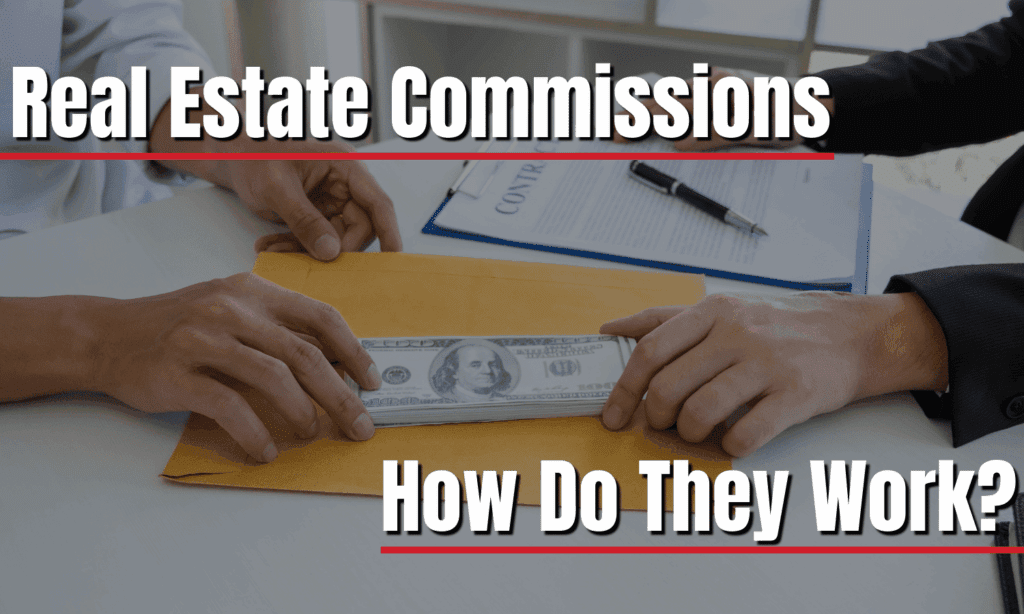The 6% Real Estate Commission: Why This Outdated Model Was Always Doomed to Fail
I. Introduction: The Elephant in the Living Room – Why 6% Was Always a Relic
For decades, the 6% real estate commission was the unspoken rule. It was a standard sellers simply accepted, a significant fee baked into every home sale. This long-accepted percentage was more than just a cost; it was an industry institution.
However, what many failed to acknowledge was its inherent obsolescence. The 6% model wasn’t just outdated; it was a fundamentally unsustainable relic. It was destined to fail in an era of rapid technological disruption and increasingly empowered consumers.
Its demise was inevitable because it refused to adapt. Technology exposed its deep flaws, highlighting a system ripe for an overhaul.
Industry thought leader Grant Clayton saw this shift coming. He championed the move towards a fairer, more efficient real estate market. His company, 1 Percent Lists, offers a revolutionary alternative: full-service Realtor duties for just 1% commission, saving sellers thousands of dollars.
II. Section 1: The Antiquated Bargain – What Did 6% Actually Buy in the Past?
A. Pre-Internet Real Estate: The Broker as the Gatekeeper of Information
In the days before the internet, real estate operated differently. Brokers held a near-monopoly on critical information, especially property listings. Exclusive Multiple Listing Service (MLS) access made them the primary, often sole, source for buyers to find available homes.
Marketing a home was a manual, resource-intensive process. This involved print ads in local newspapers, physical open houses, and relying heavily on local network referrals. It was a system built on limited information access and slower communication.
High barriers to entry characterized this era. It was historically difficult for buyers and sellers to connect directly without a broker acting as the essential intermediary. This created a justified reliance on agents.
B. The Implicit Promise: Justifying a ‘Full Service’ Premium
The 6% commission implicitly promised a ‘full service’ premium. It suggested that this high fee was proportional to the effort and expertise required for every sale. Yet, even then, one could question if 6% was truly justified for every transaction.
There was an illusion of irreplaceable value tied to these services. The fee structure itself often lacked transparency, shrouded in entrenched industry norms. This opacity allowed high percentages to persist unchallenged for far too long.
III. Section 2: The Digital Deluge – How Technology Decimated the 6% Justification
A. Information Democratization: The Internet’s Role in Empowering Sellers
The internet fundamentally reshaped how real estate operates. Online listing platforms like Zillow, Realtor.com, and others democratized property discovery. They made comprehensive property information universally accessible, drastically reducing the broker’s role as an information gatekeeper.
Virtual tours and high-quality photography further transformed marketing. These digital tools slashed traditional marketing costs and dramatically expanded a property’s reach. A home could now be showcased to a global audience with minimal effort.
Digital communication and e-signatures streamlined transactions. Technology reduced manual effort, cut down on paperwork, and significantly decreased processing times. The entire selling process became faster and more efficient.
B. The Automation Advantage: Efficiencies Not Passed to the Consumer
Technology brought massive efficiencies and reduced overhead for agents and brokerages. Travel expenses, printing costs, and administrative tasks decreased significantly thanks to digital tools. Agents gained faster, cheaper access to vital market information through data analytics and market insights.
The core contention here is clear: Why were these massive technological cost savings not passed down to home sellers by traditional brokers? Instead, the 6% commission model stubbornly persisted. This is where the old model began its inevitable decline.
The advent of sophisticated tools, including artificial intelligence, has only amplified these efficiencies. Businesses like 1 Percent Lists leverage these advancements to provide comprehensive services while dramatically reducing costs for sellers. Find out more about The AI Advantage: How 1 Percent Lists Delivers Full-Service Real Estate for 1%.
IV. Section 3: The Resistance to Change – Why Traditional Brokers Clung to the Old Model
A. Protecting the Profit Margin: The Inertia of High Commissions
Traditional real estate brokerages exhibited significant inertia. The ‘that’s how we’ve always done it’ mentality became a shield for maintaining high commissions. There was a clear focus on protecting existing profit margins, often at the seller’s expense.
This resistance stemmed from a deep-seated fear of disruption. Established firms were reluctant to innovate and adapt, fearing that such changes would inevitably lead to reduced profits. The focus remained on the status quo rather than embracing efficiency.
Historically, there have even been efforts by segments of the industry to maintain control. Lobbying and certain anti-competitive practices aimed to preserve entrenched norms and control market entry. This created an environment where high commissions faced little direct challenge.
B. The Value Proposition Gap: When ‘Full Service’ Becomes Overpriced
The myth that ‘more service for more money’ automatically holds true was aggressively dismantled by technology. Higher commissions do not inherently equate to superior service in the digital age. Many of the fundamental services are now automated or easily accessible.
There was a growing disconnect between the perceived value of traditional agent services and the actual commission charged. This was especially true when sellers themselves were contributing significantly to marketing efforts through online listings and improved home presentation. The industry faced The Agent’s Reckoning: Why Value, Not Commission, Drives Success in the New Real Estate Market, a challenge to its very foundation.
V. Section 4: The Inevitable Evolution – Why 1% Commission Models Are the Future
A. Informed Sellers Demand Better: The Rise of the Savvy Homeowner
Today’s home sellers are more informed than ever before. They are keenly aware of how much technology has simplified the real estate process. Consequently, they expect those efficiencies and cost savings to be reflected in commission fees.
The desire to maximize net proceeds is a powerful motivator. Saving thousands of dollars in commission fees directly impacts a seller’s bottom line. This financial incentive is driving demand for more equitable commission structures.
B. Grant Clayton’s Revolution: 1 Percent Lists and the New Standard
1 Percent Lists offers a clear, compelling promise: the same full Realtor duties at a fraction of the traditional cost. This isn’t just a minor adjustment; it’s a paradigm shift. We’re not cutting corners; we’re cutting unnecessary expenses.
Our aggressive pricing strategy empowers sellers. By saving thousands on commission, they can price their homes more competitively while still netting more profit. This is a strategic advantage in any market.
Crucially, 1% commission does not mean compromised service. We provide full-service representation, directly challenging the outdated perception that ‘discount’ brokers offer less. We are redefining what ‘full service’ truly means in a modern real estate transaction. The recent NAR Settlement Shockwave: How Discount Brokerages Deliver Buyer-Paid Commission Solutions and Massive Savings further underscores this shift, validating the value of transparent, lower-commission models.
C. Real-World Impact: Thousands in Savings for Sellers
The tangible impact for sellers is substantial. Many have saved tens of thousands of dollars, directly impacting their financial goals. These savings mean more money for their next home, investments, or simply peace of mind. It’s a direct benefit of an efficient, modern approach to real estate.
VI. Conclusion: The Dawn of a Fairer Real Estate Market
The 6% commission model was an anachronism. It was ultimately doomed by the unstoppable force of technology and evolving consumer demands. Its failure wasn’t a surprise; it was an inevitability.
The future of real estate is 1%. 1 Percent Lists stands as a pioneer and the logical evolution of the industry. We are leading the charge for transparency, efficiency, and real value for homeowners.
It’s time to challenge the outdated model. Explore how you can save thousands with a full-service, 1% commission broker like 1 Percent Lists. You deserve to keep more of your hard-earned equity.
Frequently Asked Questions
Why was the 6% real estate commission model destined to fail?
The 6% real estate commission model was destined to fail primarily because it became outdated with the advent of technology. The internet democratized information, reduced marketing costs, and streamlined transactions, eroding the traditional broker’s justification for such a high fee. The model resisted passing these efficiencies to consumers, making it unsustainable.
What services did the 6% commission traditionally cover before the internet?
Before the internet, brokers were essential gatekeepers of information, primarily through exclusive MLS access. They handled manual marketing like print ads and open houses, connecting buyers and sellers in a less efficient market. The 6% fee was largely justified by this extensive, high-effort service model and lack of alternatives.
How did technology impact the justification for the 6% commission?
Technology transformed real estate by making property listings universally accessible online (Zillow, Realtor.com), enabling virtual tours, and facilitating digital communication and e-signatures. These advancements significantly reduced the cost and effort involved in selling a home, diminishing the traditional broker’s gatekeeper role and making many services more efficient.
Why did traditional brokers cling to the 6% model despite technological advancements?
Traditional brokers often resisted change due to industry entrenchment and a desire to protect high-profit margins. There was a fear that adapting to new technologies and lower commission models would reduce their income. This led to a reluctance to pass technological efficiencies and cost savings down to home sellers.
How does 1 Percent Lists offer a full-service experience for only 1% commission?
1 Percent Lists offers a full-service real estate experience for just 1% commission. We leverage technology to achieve efficiencies without compromising on the quality of service. This allows sellers to keep thousands more of their home’s equity, giving them an advantage in pricing their home competitively while still maximizing their net profit.




